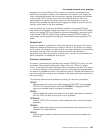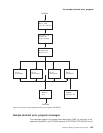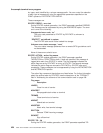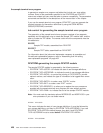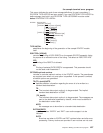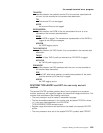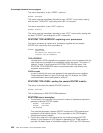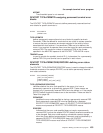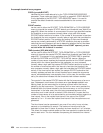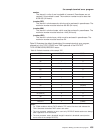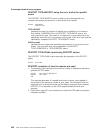
TID|NOTID
specifies whether the symbolic terminal ID of the terminal associated with
an error is to be recorded on the transient data destination.
TID
The terminal ID is to be logged.
NOTID
No terminal IDs are to be logged.
DECB|NODECB
specifies whether the DECB of the line associated with error is to be
recorded on the transient data destination.
DECB
The DECB is logged. The hexadecimal representation of the DECB is
logged as two 24-byte messages.
NODECB
No DECB logging occurs.
TACLE|NOTACLE
specifies whether the TACLE prefix is to be recorded on the transient data
destination.
TACLE
The 16-byte TACLE prefix as received from DFHTACP is logged.
NOTACLE
No TACLE prefix logging occurs.
ESE|NOESE
specifies whether the ESE associated with the error is to be recorded on
the transient data destination.
ESE
The ESE, after being updated, and before being deleted (if the action
puts the terminal out of service) is logged.
NOESE
No ESE logging occurs.
DFHTEPM TYPE=ENTRY and EXIT–for user entry and exit
routines
The sample DFHTEP provides guidance about how to prepare error processor
routines, particularly with regard to register and subroutine linkage conventions. The
routines must also observe the following restrictions:
v The error processor must be coded in assembler language.
v The first executable statement in the routine must be labeled TEPCDxx, where
“xx” is the error code specified in the DFHTEPM
TYPE=ERRPROC,CODE=errcode macro.
v Register usage conventions and restrictions are stated in the sample DFHTEP
source.
v The error processor must exit to the sample DFHTEP symbolic label TEPRET.
the sample terminal error program
Chapter 8. Writing a terminal error program 429



